The Vine Bridges of Iya Valley
Hanging over one of Japan's "hidden valleys," these vine bridges must be remade every three years.
One of Japan’s three “hidden” valleys, West Iya Valley is home to the kind of misty gorges, clear rivers, and thatch-roofed houses that one imagines from a Japan of 100 years ago. Remote and difficult to enter, the valley was a favored hideout of refugees, bandits, and disgraced warriors. To get across the Iya river that splits the rough valley terrain, these bandits, warriors, and locals created a very special, if unsteady, type of bridge — a vine bridge.
No one is sure exactly who first created the vine bridges that reach across the Iya River (there were at least 13 at one point), although a couple of popular theories exist, both steeped in folklore. One tale says that the bridges were created by spiritual figure Kōbō-Daishi, the founder of Shingon Buddhism. Assumedly he came to the impromptu solution while traveling in the area and the idea caught on well enough to become a tradition. The other school of thought is that the bridges were originally the work of the legendary Heike refugees who would have built the bridges while fleeing from the Genji Clan, in search of a safe place to settle down. The idea was that the bridges could be easily cut down, turning the river valley into a naturally impassible barrier to their enemies.
To create the bridges, two Wisteria vines — a particularly aggressive and tough vine that climbs around any host — were grown to extraordinary lengths from either side of the river. Once the vines had reached a sufficient length they were woven together and planking was woven into them at 8 to 12 inches apart. The bridge had no sides and a Japanese historical source relates that the original vine bridge was so unstable, that when those who were not used to it attempted to cross, the bridge would start to sway and bounce wildly causing the poor soul to freeze in place, unable to go any farther. No doubt this suited the reclusive residents of Iya Valley just fine.
Local artisans have continued to keep the bridges alive, and while the number of bridges has dwindled to three, they are no less amazing. The largest and most accessible of the spans is the Iya Kazurabashi Bridge which reaches almost 150 feet across the valley at a height of almost 50 feet above the water. This more popular of the vine bridges is in West Iya, quite close to the main village, but the most beautiful vine bridges are a pair found in the east of the valley, known as the husband and wife bridges. Though stories range as to their origins, some believe they were built in the 1100s.
While some (though apparently not all) of the bridges have been reinforced with wire and side rails, they are still harrowing to cross. 147 feet long, with planks set seven inches apart and a drop of four and a half stories to the water, they are not for those with a fear of heights. As one bridge crosser put it: “You never think a vine bridge is scary until you walk on one and shit a brick.”
About a two-hour drive from Tokushima City, the bridges can still be crossed for 500 yen.
Community Contributors
Added by
Edited by
The Atlas Obscura Podcast is Back!


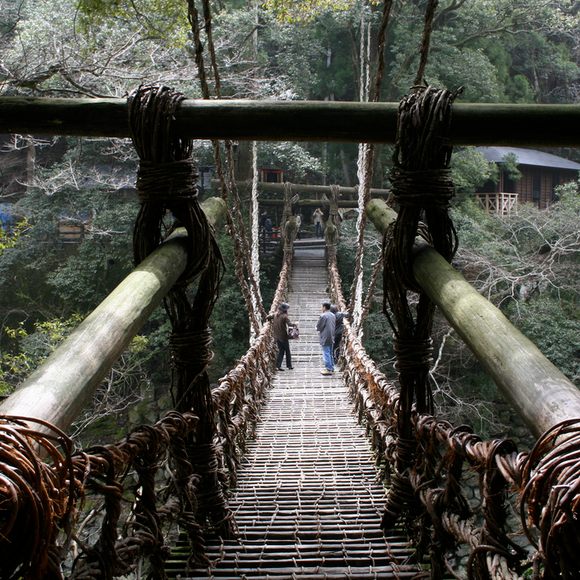

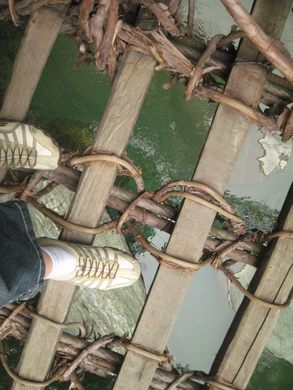
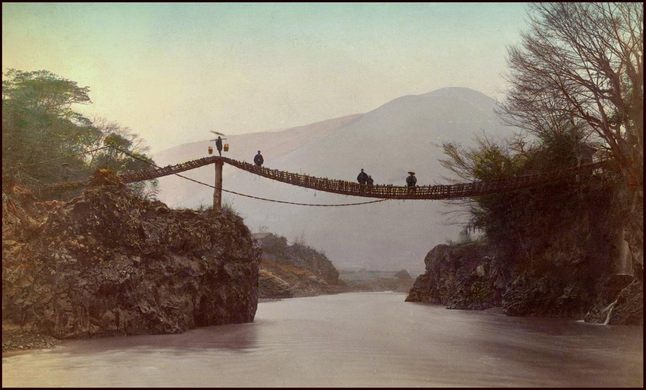
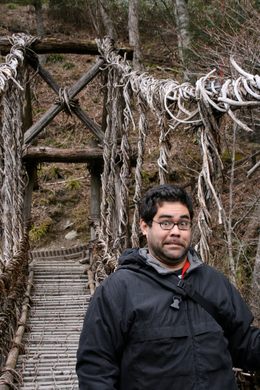
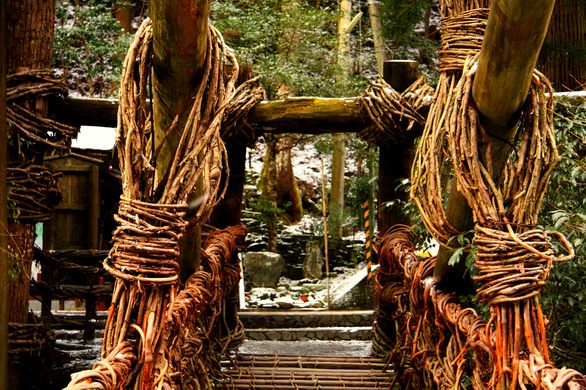
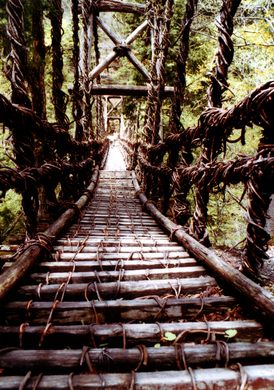
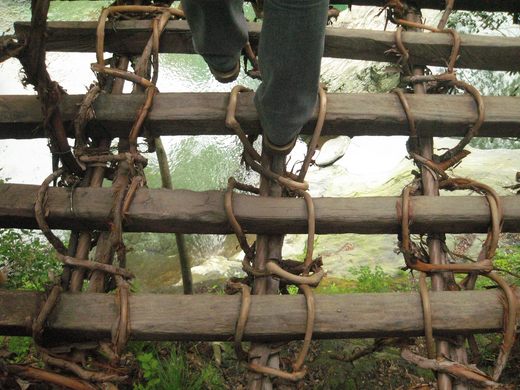
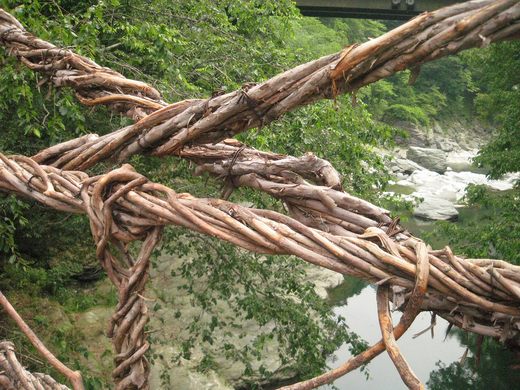
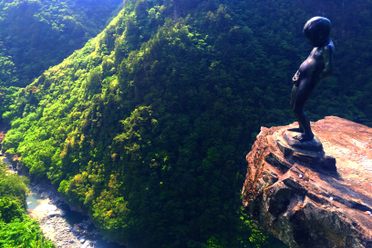













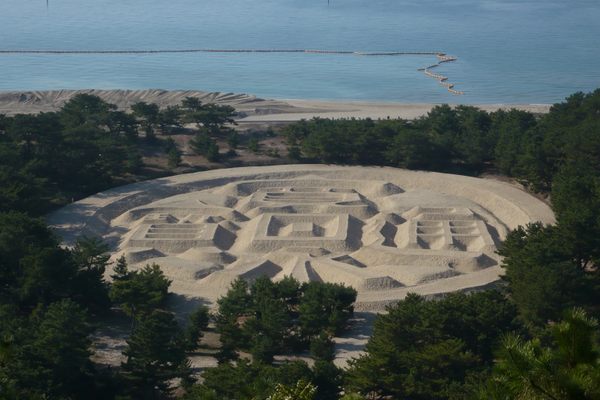





Follow us on Twitter to get the latest on the world's hidden wonders.
Like us on Facebook to get the latest on the world's hidden wonders.
Follow us on Twitter Like us on Facebook